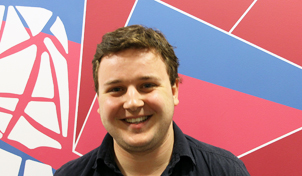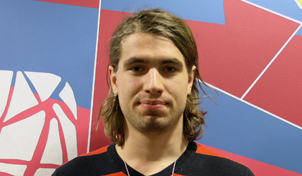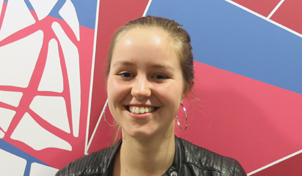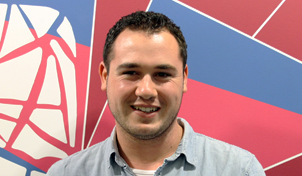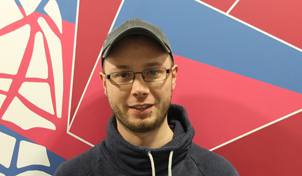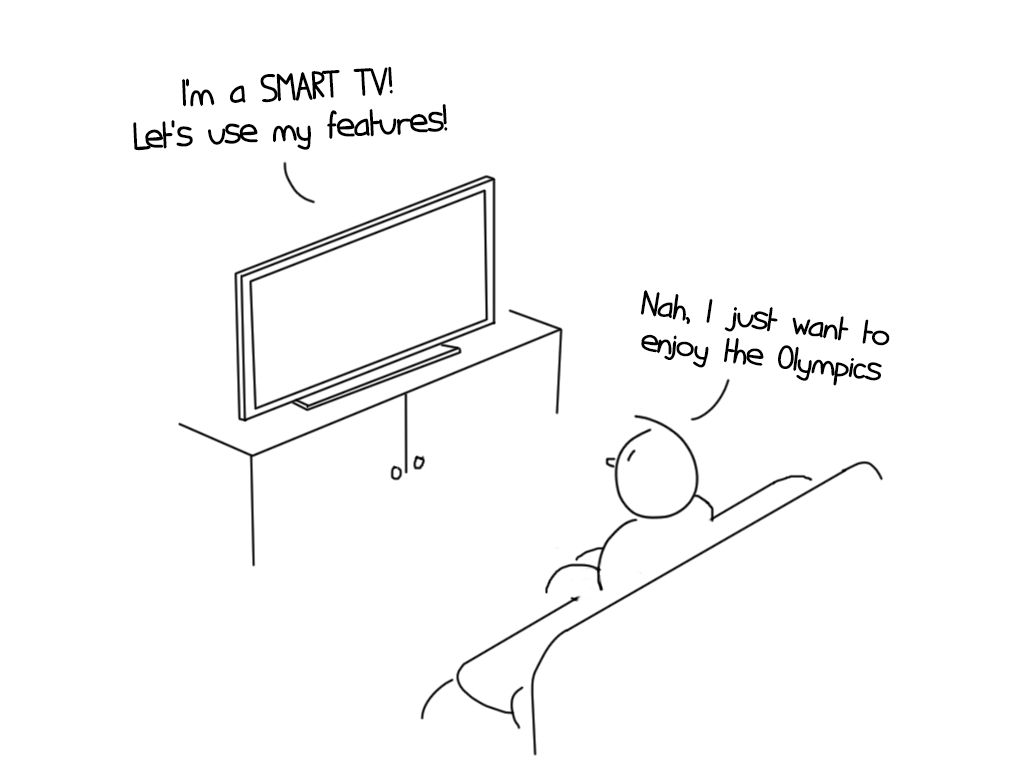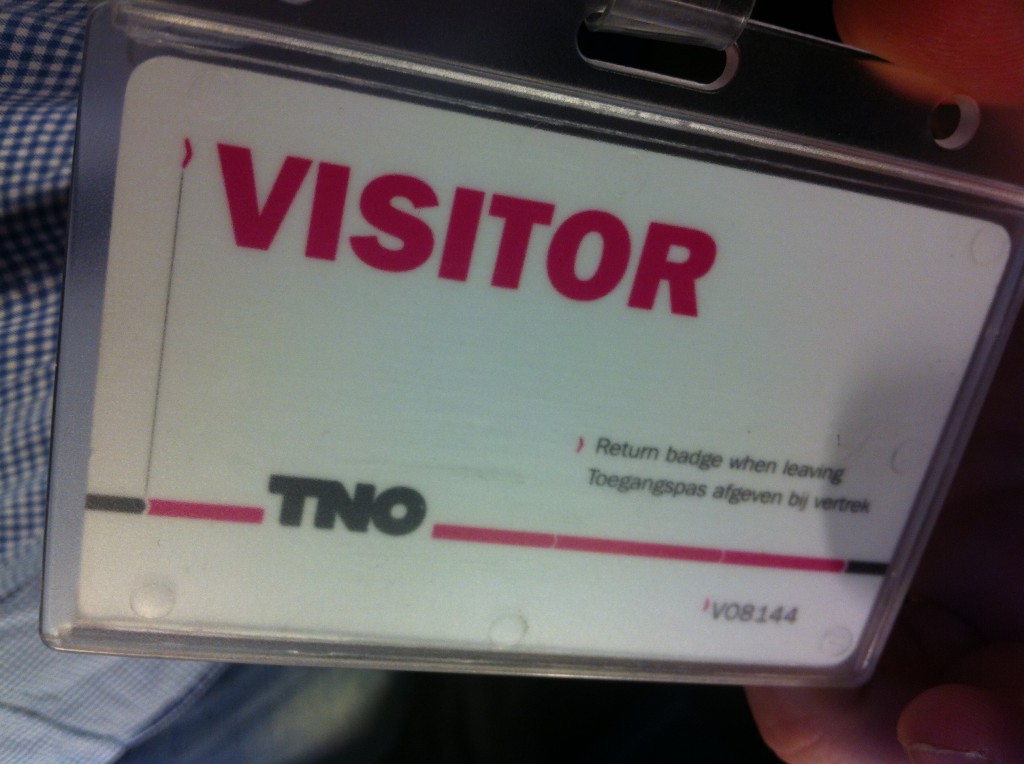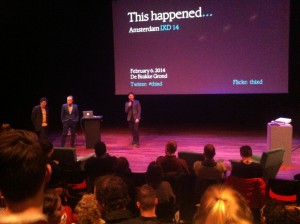Discovering new possibilities at TNO
Since we’re researching ‘THE FUTURE’ we thought it would be nice to learn more about future technologies. The perfect place to learn more about these things is TNO. TNO is, as you might know, an applied science research organisation. They do a lot of research on different fields, like healthy living, industrial innovation, information society, etc. Yesterday we had the chance to talk to Rob Koenen, who is part of the media department placed under the information society theme. At TNO, Rob and a few of his colleagues showed us some great demos of a couple of projects they are working on.
We started with a demo of the FascinatE project (http://www.fascinate-project.eu/). In this demo we were given a tablet where you can see a panoramic video of a sport stadium. It was recorded in 4k, which offered a view that was really sharp, but when you zoomed in, it got even sharper. We could zoom in on every detail! We were surprised that it worked so good and so smooth. Later, we saw a demo which combined this idea with a smart TV. In this demo the view of the smart TV stayed the same but with the tablet in your hand you could zoom in on everything, change the angle, get more information, etc. While you use your iPad to zoom in on Lionel Messi, the rest of your family can just watch the regular match.
The next demo was an automatic generator of graphs of soccer matches. This program makes all sorts of graphs of the match so you can see different patterns when a team scores or when they are just running around the field. As a user, you can like certain moments, so the program can recognise moments like these in the graphs. You can now choose to get a summary/recap with all sorts of moments like these. This project was specially made for the amature soccer, because everything goes automatically.
Next up they wanted to show HbbTV to us. Unfortunately, the TV wasn’t really working with us (it was a monday..) so we didn’t see it. Rob did told us that he thought the HbbTV should be up and running on every channel with every cable company by 2015/2016.
After the demos we chatted and discussed some more about other technologies and trends with Rob. It was very nice to see and hear that most of our concepts are relevant. It’s nice to know we are on the right track! We are very thankful that we could visit TNO and the option to ask everything we wanted to know.
Until next time!
The future of TV
This Happened Amsterdam
Interactive Design event
Thursday night at De Brakke Grond, This Happened Amsterdam had arranged their This Happened NL event. An event focusing on the process of building interactive media products. The event had four speakers that were given 10 minutes to present their product followed by 10 minutes of Q&A. Some of the products were already live others were still in the making. The four speakers were:
• Marie de Vos from STBY
• Christian Eckert and Andreas Wegner from Icon Incar
• Pieter Jan Pieters from The Social Project
• Luna Maurer from Studio Moniker
Marie de Vos from STBY
The first on the scene was Marie de Vos presenting a project she worked on about “dynamic boarding information above train platforms”. She worked together with ProRail and NS on the project. Marie walked us through the design process that led to a 180 meter long LED screen on the platform at Den Bosch Station. Given she only had 10 minutes at her disposal she couldn’t go to in depth with each step. She focused mainly on the research side of the process. A lot of communication went into the design process, doing several workshops with the different stakeholders, and a wide variety of quantitative and qualitative research of the traveler’s behavior. What we found interesting was the amount of time put into researching the traveler´s behavior; they used different methods to learn about the traveler’s movement on the platform. They also used much time discussing the product with stakeholders. It surprised us how close they worked with the involved parties.
Christian Eckert & Andreas Wegner from Icon Incar
Second to present were Christian Eckert and Andreas Wegner about designing HMI for cars. They were not allowed to show us their products because of the companies they work for, but they shared with us several difficulties they faced in designing interfaces for cars. For example, they told how they couldn’t use all of the latest technologies because of safety issues. As they put it, they were “designing against distraction”. Also they explained how it takes time for people to get accustomed to new technologies so they couldn’t put all of these in their new designs. Another difficulty they mentioned was the international differences. They product is meant to be used all over the world but they have to keep in mind the different cultures and laws. As we are working on a project, which will be used in the future (at the 2016 Olympics in Brazil) we were interested in how they at Icon Incar were facing the difficulties of designing for the future. When we went to ask Christian he told us that they didn’t worry that much about it. They kept in mind some of the trends, but they also went with what they wanted. Also they kept very open to make changes during their design process.
Pieter Jan Pieters from The Social Project
Next up was Pieter Jan Pieters who was presenting The Social Project. He created a piece of hardware, which would neutralize the frequency of signals in the air, disabling cell phone signals. Then he made several objects in which he incorporated the hardware: a button, a bench and a speaker. Also he thought of objects such as tables and even tennis balls. However when he started to launch the products, the cell phone companies registered a disturbance in their signals. As this type of device is also used by burglars and is illegal in the Netherlands they informed the police who than confiscated his device. What we took away from this is that we have to carefully consider the laws before we launch anything, especially because we might be using copyrighted content in our product. It also showed us how important it is to consider the stakeholders during the design process.
Luna Maurer from Stedelijk Museum
The last to present was Luna Maurer. She showed an art project, which is currently exhibited in the Stedelijk Museum in Amsterdam, and is called Your Line or Mine. The idea is to give people a paper with several dots and a set of instructions on how to connect these dots. Next the paper is scanned and it will be add to the video of all the scanned papers. What Luna experienced in the creation of this project is that it’s quite hard to write clear instructions. Even after extensive testing with users it still was not perfect. Also there were many visitors who completely ignored the instructions. This resulted in the creators of the project having to review every drawing manually. For us that showed how people are going to explore every possibility within the product. It also showed how hard it is give clear instructions. This means during the process we have to consider every possible way of using it.
Helpful and inspiring
Overall the presentations showed us a lot about the whole interactive design process. The talks were very interesting and even inspiring. We got quite some input for our own project as well. It was a fun event and we’re looking forward to the next one.



